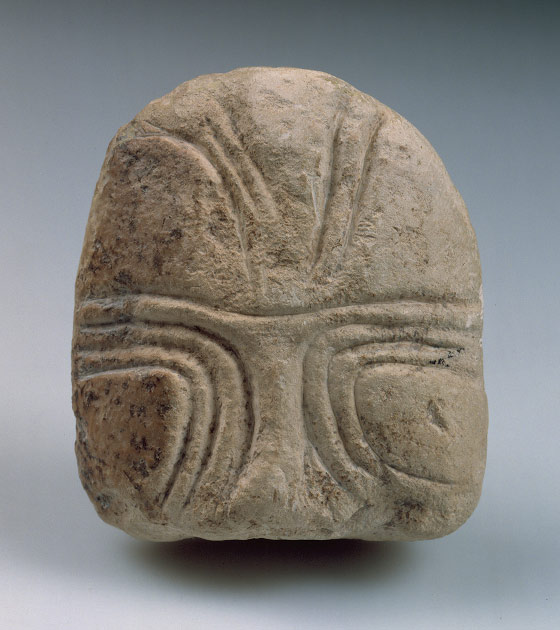HOME / Table of Contents = Civilizations - Cultures - Areas - Regions - Prehistory
Other Archaeological Sites / The Neolithic of the Levant (500 Page Book Online)
Ain Mallaha -- Eynan
Selected Excerpt on Ain Mallaha
The Neolithic of the Near East
James Mellaart (1975)
GN 776.33 N4 M44


 A large village of the early Natufian Period by Lake Huleh in Upper Jordan. Each of the three phases contained about 50 substantial circular houses and open areas with storage pits. The size of the settlement (circa 2000 square metres) and the well-built houses suggest that this settlement was permanently occupied. The economy was based on the hunting or herding of gazelle as well as hunting other large animals, fishing and harvesting wild cereals. The houses in the lowest level were between 7 and 9 metres in diameter, those from the upper two levels circa 3-4 metres. They are built in hollows; many had paved stone floors with centrally placed stone lined hearths and the superstructures were probably of reeds and branches. One early house with a paved stone floor and red wall plaster was later re-used as a tomb of a man and a woman of some importance; the woman adorned with a shell head-dress. Other graves have also been found containing single or collective inhumations ... (AHSFC).
A large village of the early Natufian Period by Lake Huleh in Upper Jordan. Each of the three phases contained about 50 substantial circular houses and open areas with storage pits. The size of the settlement (circa 2000 square metres) and the well-built houses suggest that this settlement was permanently occupied. The economy was based on the hunting or herding of gazelle as well as hunting other large animals, fishing and harvesting wild cereals. The houses in the lowest level were between 7 and 9 metres in diameter, those from the upper two levels circa 3-4 metres. They are built in hollows; many had paved stone floors with centrally placed stone lined hearths and the superstructures were probably of reeds and branches. One early house with a paved stone floor and red wall plaster was later re-used as a tomb of a man and a woman of some importance; the woman adorned with a shell head-dress. Other graves have also been found containing single or collective inhumations ... (AHSFC).
The Natufian Period (12500--10200 before present according to carbon-14 datings) corresponds to the first phase of a phenomenon which within several thousands years was to transform hunter-gatherers into the earliest city-dwellers in Mesopotamia: the making of the Neolithic culture. At the time in the Levant societies showed evidence of strong tendencies to sedentary life. Later on they learned to control their vegetable food resources and eventually animal slaughter ...
Mallaha -- on the shores of the ancient Lake Huleh -- is one of the best known Natufian type-sites. At the 'village' there still remains half buried small houses of round or semi-circular shape, most of them hedged with stones and with timber-post wedgings, pits, hearths and graves. This exceptional state of conservation allows detailed research into the Natufian way of life ...
The History of the Ancient Near East Electronic Compendium

